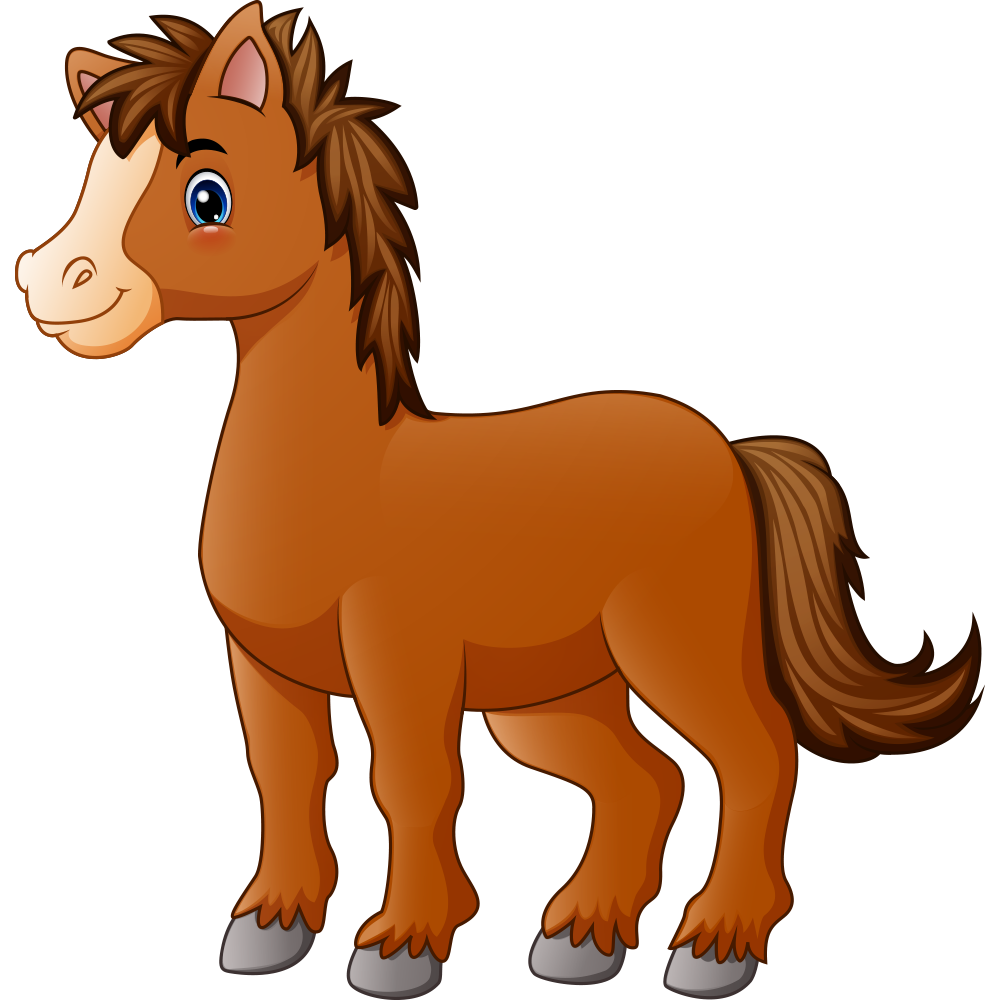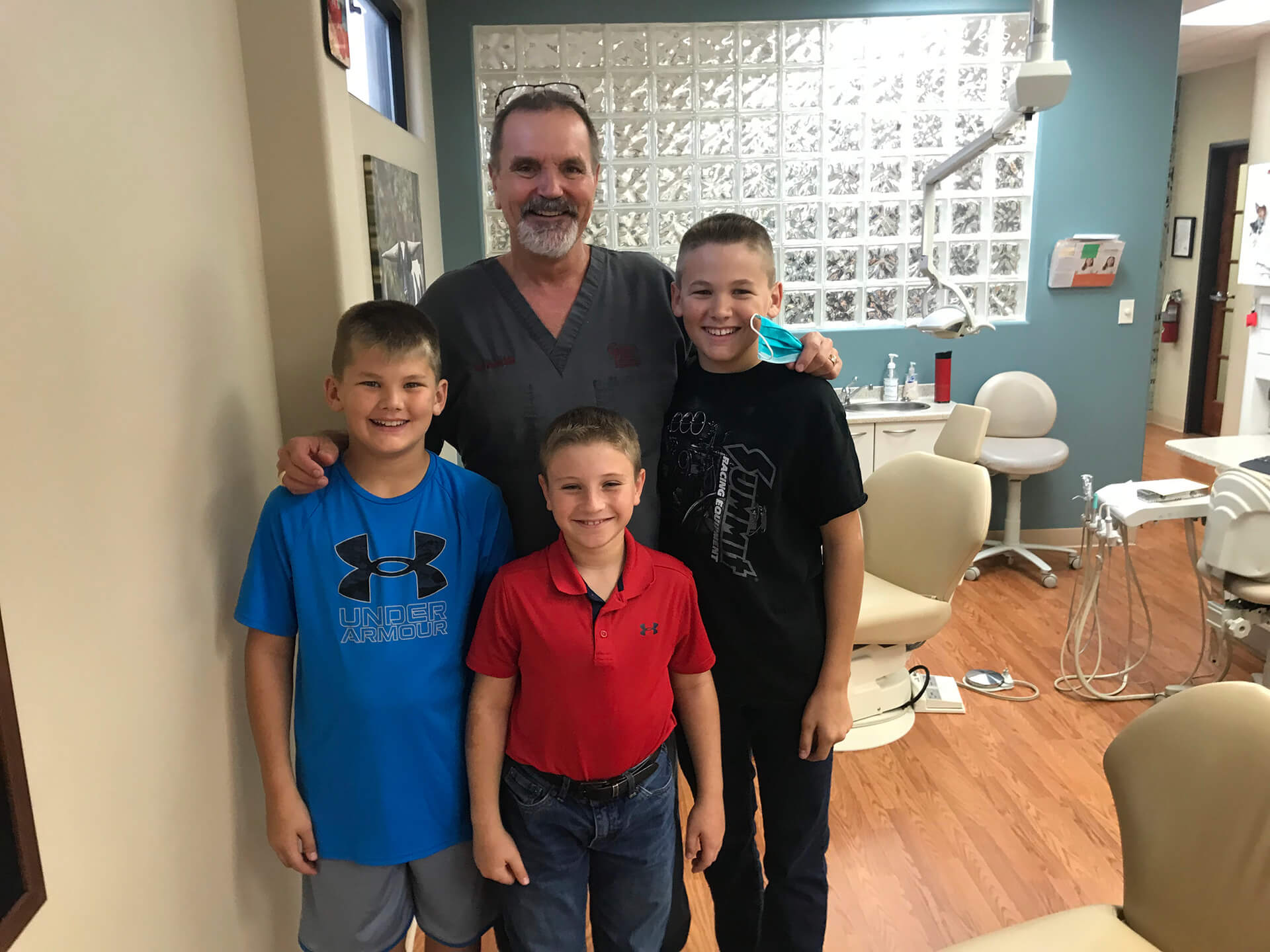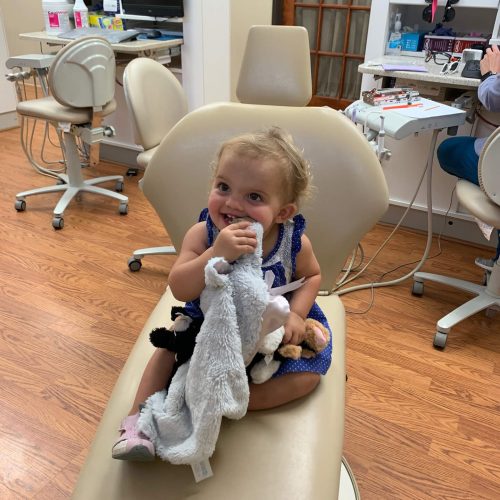Sedation


Nitrous Oxide
Some patients may require nitrous oxide to help them undergo a dental procedure comfortably. Nitrous oxide, or “laughing gas” has been used in medicine and dentistry for over a century. It is one of the oldest, safest, and shortest acting anxiolytics available. This pleasant smelling gas is mixed with oxygen and inhaled through a nasal mask by a patient throughout a dental procedure. It has a relaxing effect on the body, helps with a hypersensitive gag reflex, reduces the sensation of vibration in the mouth from dental instruments, and can act to obtund mild discomfort. All of these benefits are very helpful when working with pediatric patients of all ages. It’s a common misconception that nitrous oxide will put a patient to sleep. The inaccurate portrayal of this in television and movies has mislead the general public into thinking that “laughing gas” is a sleep-inducing general anesthetic. Nitrous oxide is not administered to place kids to sleep but to accomplish a more pleasant dental experience. Kids typically remain awake during nitrous oxide administration. It typically allows the pediatric dentist to use less local anesthetic or “numbing medicine”. This is especially important in young pediatric patients because too much local anesthetic can make them dangerously ill. If your child is scheduled for a nitrous oxide appointment, we ask that they only eat a small meal 4 hours prior to the appointment, or if the appointment is early in the morning that they have an empty stomach. Sometimes nitrous oxide can upset a full tummy and we want to avoid the unpleasant sensation of nausea or vomiting. Parents should also be aware that nasal congestion or obstruction may reduce the efficacy of this gas.
Oral Conscious Sedation
Many children are unable to cooperate with dental treatment. This may be due to their young age, amount of treatment needed, or other factors including a previous traumatic dental experience. When the required treatment is not able to be performed with nitrous oxide (“laughing gas”) alone, your child’s pediatric dentist may recommend conscious sedation as an alternative approach. Conscious sedation is accomplished by administering nitrous oxide with an oral “cocktail” of medications. These medications are administered to complement laughing gas. During a conscious sedation a patient will likely remain awake throughout the entire procedure. This sedation approach is not designed to put patients to sleep and should not be confused with general anesthesia or I.V. sedation. Our dentists are licensed by the state of Texas to provide sedation and have received advanced training in the use of oral sedatives and the monitoring of sedated patients. All clinical staff are also trained in emergency management. You will be able to discuss this and other options with our pediatric dentists.
General Anesthesia
Sometimes a child cannot safely be treated with laughing gas or conscious sedation. Technique sensitive dental procedures are difficult to complete on patients that are very young, combative, or have extensive treatment needs. Attempting this type of work without general anesthesia can be very dangerous and traumatizing for the patient. For these kids we provide the option of general anesthesia. While many parents are nervous about the prospect of having their child asleep for the dental work, you can rest assured that modern techniques allow for an extremely safe anesthesia experience. With the correct provider, general anesthesia is a safe and effective option. At Cedar Park Pediatric Dentistry we always utilize a board certified dental anesthesiologist trained to provide anesthesia services in the dental clinic. This requires a different skill set and preparation when compared to anesthesia provided in a hospital or surgery center. Modern monitoring devices and anesthesia delivery systems are utilized and each anesthetic approach is customized to the need of each patient. Parents will generally be allowed to accompany their child to the surgical suite. They will be present with their little one as they fall asleep and reunited prior to wake up. The child is usually allowed to breathe anesthetic gases through a mask in order to fall asleep, though sometimes the anesthesiologist may recommend another form of induction. The child will be under the direct supervision of the anesthesiologist and nursing staff throughout their entire visit. A complete compliment of emergency management medications and supplies are readily available to the surgical team throughout the course of the appointment. All anesthesia providers are current in Pediatric Advanced Life Support (PALS). If you have any questions about general anesthesia our providers will happily review all aspects of treatment with you.
Your child’s anesthesiologist will be glad to take the time to answer any questions you may have.
We love hearing from our amazing patients.



